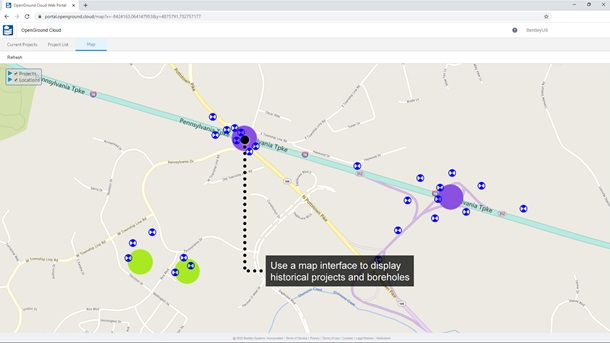Westminster Energy, Environment & Transport Forum policy conference – Morning, Monday, 7th December 2020 Book Online | Live Agenda | CPD certified | Sponsorship | Our Website | @WEETFEvents | Unsubscribe with Richard Ballantyne, Chief Executive, British Ports Association Tim Morris, Chief Executive, UK Major Ports Group Peter Neville-Jones, Technical Director, Maritime and Ports, AECOM FROM – Michael Ryan, Deputy Editor, Westminster Energy, Environment & Transport Forum Hello, I hope this finds you well. I’m inviting you to this conference, which will discuss the policy priorities for further developing ports in the UK, examining how key operational challenges ahead of the end of the EU exit transition period. Sessions will also assess the impact of COVID-19 on the sector, priorities for modernising and digitising ports, decarbonising ports and the future of freeports in the UK. Why this is relevant – the context: [jump to the agenda summary] It takes place: In the context of significant challenges and pressures effecting ports throughout the UK, with COVID-19 disrupting port operations and efficiency, and with the end of the EU exit transition period drawing near Following the close of the Government’s Freeports Consultation earlier this year on creating up to 10 freeports in locations across the UK Following the anticipated release of the National Infrastructure Strategy alongside the Autumn Budget, expected to outline the Government’s long-term priorities for infrastructure development With the published 5-year plan for maritime and trade, which prepares a vision for 2050, and outlines how key areas such as port digitisation, the use of autonomous technology, and the greening of port operations, can improve the strength and competitiveness of British ports [Book Online] Key areas for discussion: [jump to the agenda summary] Developing port resilience and maintaining operational efficiency during periods of economic and physical disruption Ahead of the end of the EU exit transition period, planned sessions will discuss: how the sector has adapted to COVID-19 what will be required from policy in order to minimise further challenges, such as protecting the financial sustainability of key supply chains, and the flow of travel and trade the impact of the intensification of recent preparations for the upcoming end of the transition period – such as the provision of £84m to grow an intermediary sector for custom checks, encompassing all EU trade beyond 2020 – including customs requirements for imported and exported items, the declaration of goods, and increased physical checks What is needed from policymakers and wider groups of stakeholders to ensure ports remain resilient, and are able to operate effectively during periods of disruption, considering: priorities for safeguarding port operations during COVID-19 – accessing financial support mechanisms, ensuring facilities remain open and safe for cargo and port users, and latest thinking on utilising facilities efficiently to protect supply chain operations preparing for different exit scenarios and steps for minimising disruption at the end of the transition period – boosting capacity for increased checks and traffic, reducing barriers to the efficient flow of freight and commerce and opportunities presented by digital technology for streamlining the travel of goods Steps for unlocking smart ports and digitisation, and the future of freeports in the UK Further sessions will provide an opportunity to examine the priorities for developing port infrastructure in the UK, including: designing a ports infrastructure system that enables economic growth – scaling up terminal capacity for international trade, partnerships with industry to facilitate new services, and improving the readiness of major ports for dealing with new sectors and export markets developing a pathway for smart ports and overcoming modernisation challenges – digitising logistics and technical operations, automating stacking and crane functions, steps for accessing funding for innovation, and reducing operational costs through efficiency leveraging the benefits of port development for local economies – increasing local business activity, integrating ports within the wider transport infrastructure network, and supporting economic growth next steps for decarbonising ports and their operations – including reducing operational emissions, supporting the growth of low carbon shipping, and working with local governments and other energy-intensive stakeholders on integrated local net-zero strategies It will also be an opportunity for policymakers and stakeholders to examine the Government’s intention to create up to 10 new freeports across the UK, following the closed consultation earlier this year, with sessions looking at the potential opportunities for economic growth, as well as implications on customs regimes, including: Future customs arrangements – priorities for setting rules on duty free imports, assembly, and re-export, communicating new and flexible taxation rates to businesses establishing a system that fosters and drives innovation – providing dynamic regulation for innovators, enabling new business models and industries to operate in growth hubs, and latest thinking on growing productivity through the development of startups and new technology [Book Online] ***Full-scale policy conference taking place online*** [further details] The agenda The outlook of the ports sector Case study – protecting port functions during COVID-19 Preparing UK ports for after the UK-EU Transition Period – minimising traffic and trade congestion, boosting capacity, and latest thinking on adjusting to new tariff regimes Developing port infrastructure in the UK – designing terminals fit for capacity, and meeting the needs of new services and demands Positioning the UK as a leader in smart ports and automation – increasing operational efficiency, cargo logistics, and harnessing the benefits of digitisation Pathways for port decarbonisation up to 2050 – commercialising low-carbon shipping, reducing operational emissions, and collaborating on local net-zero strategies Next steps for freeports in the UK – practical design, enabling economic growth, and supporting innovation Effective customs arrangements – reducing tariff barriers, becoming more competitive, and supporting duty free re-exports Freeports and supporting innovation – regulatory flexibility, attracting startups, and testing new technology Policy priorities for developing and supporting UK ports [jump to full agenda] [Book Online] Policy officials attending: Our forums are known for attracting strong interest from policymakers and stakeholders. [About Us] It’s certainly the case with this one. There’s an outline of the government departments, regulators and other interested parties who we expect to take part














